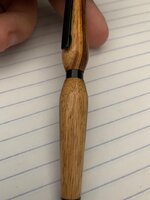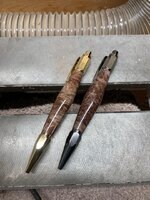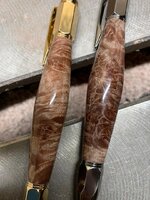MMWW
Member
Hello all. I have been trying to get a beautiful polish with CA glue. I sand the wood to 12,000, wipe it down with mineral spirits and apply around 8 layers of medium CA glue using accelerant for faster drying. I spend about an hour from start to finish on a single pen and the finished blanks look beautiful... Upon assembly almost every time, the glue chips off and in my opinion ruins the pen.. Am I doing something wrong here? Should I opt for a wax friction polish?
Any suggestions would be greatly appreciated. Happy turning everyone!!
Best regards,
Kyle Scott
Morning Moon Wood Works
Any suggestions would be greatly appreciated. Happy turning everyone!!
Best regards,
Kyle Scott
Morning Moon Wood Works



